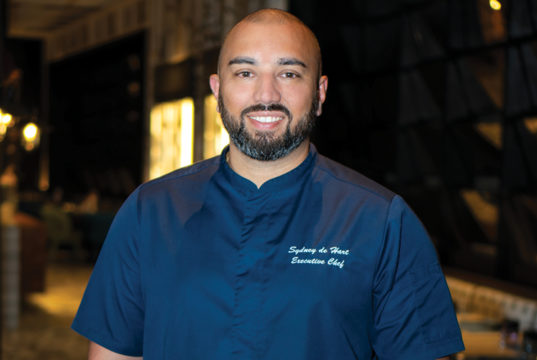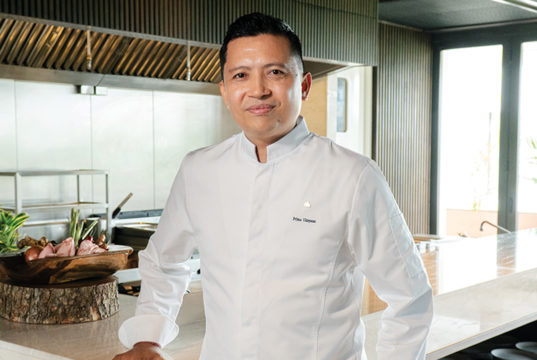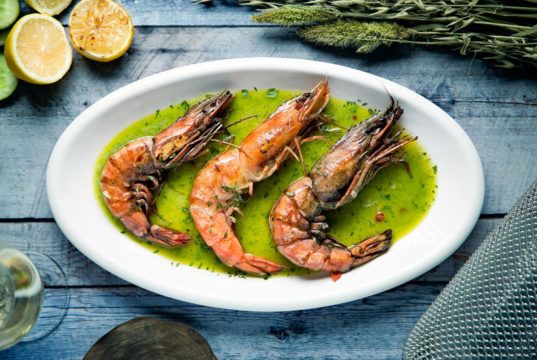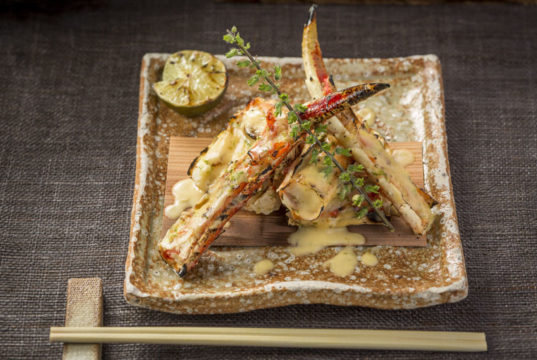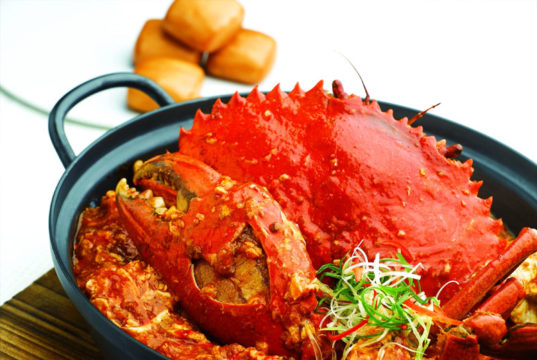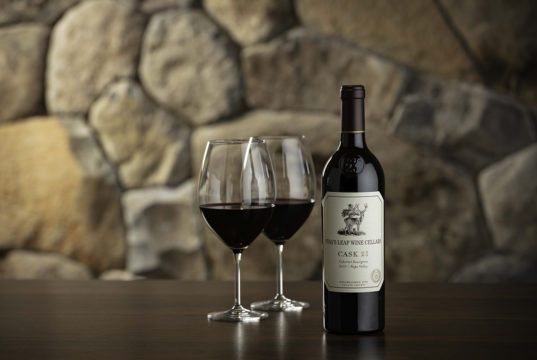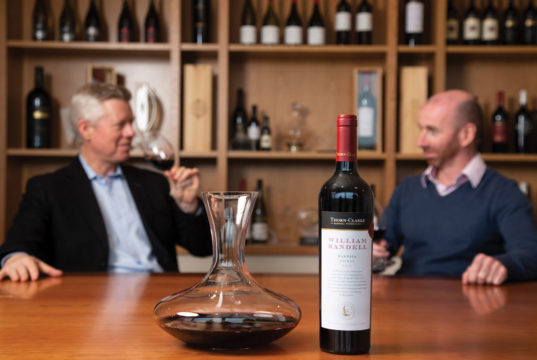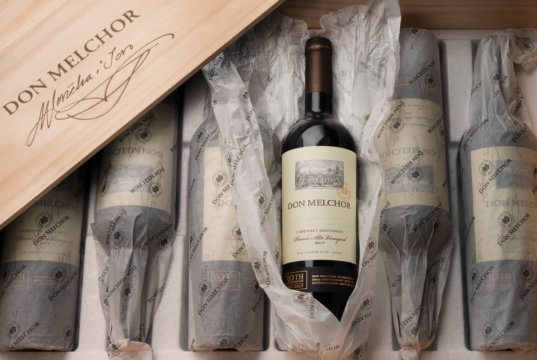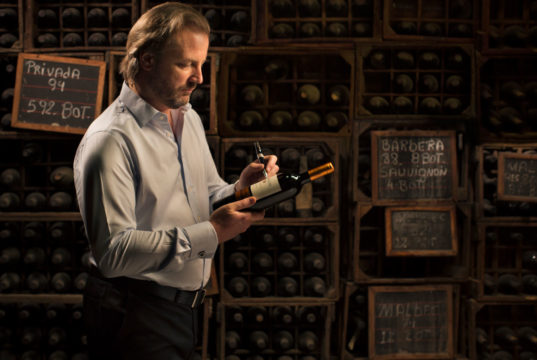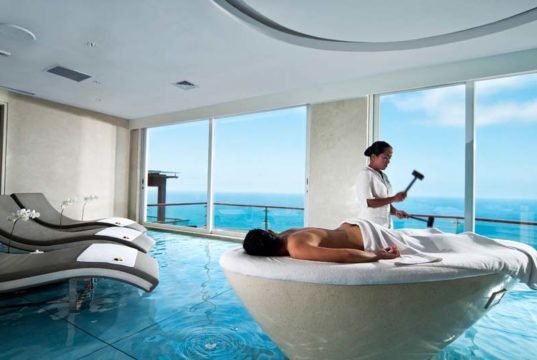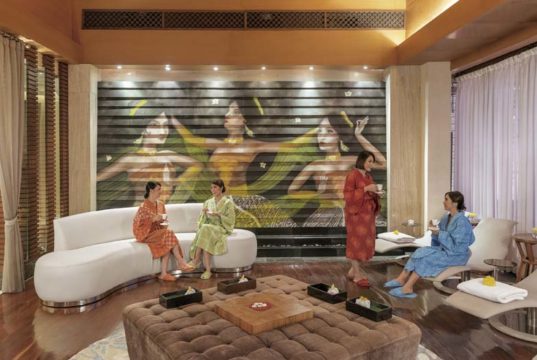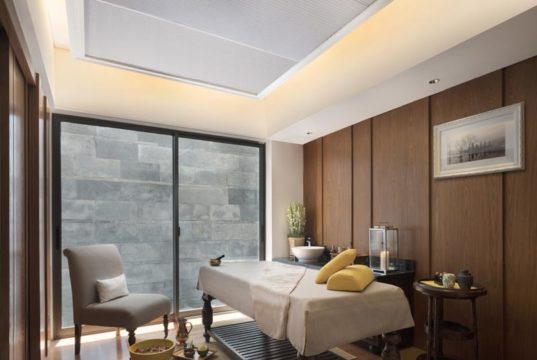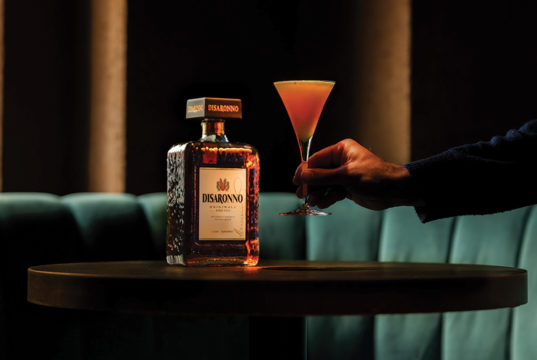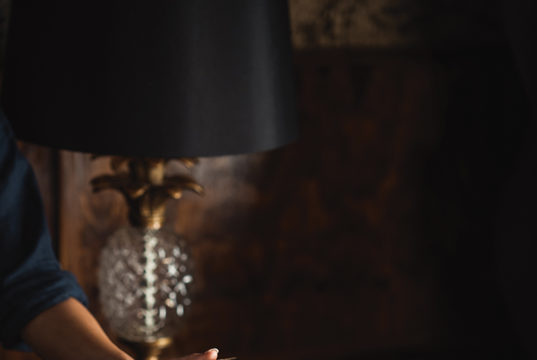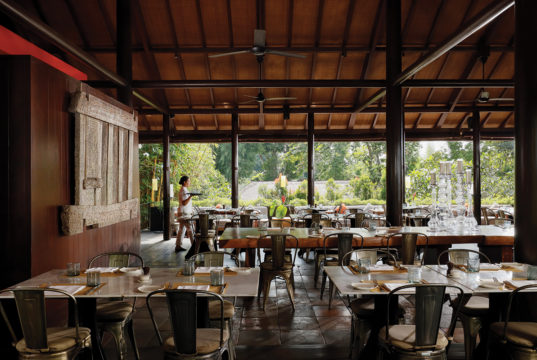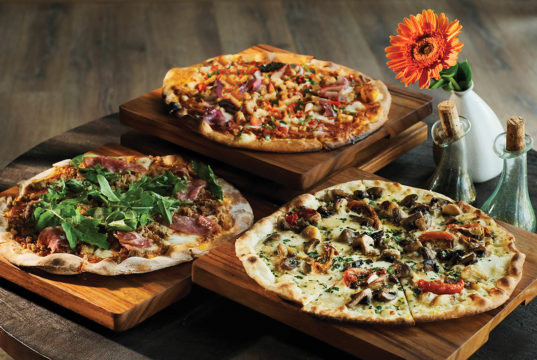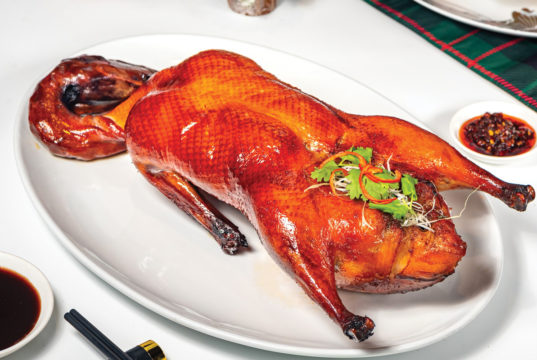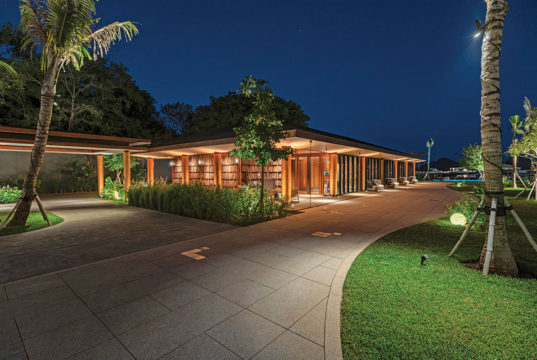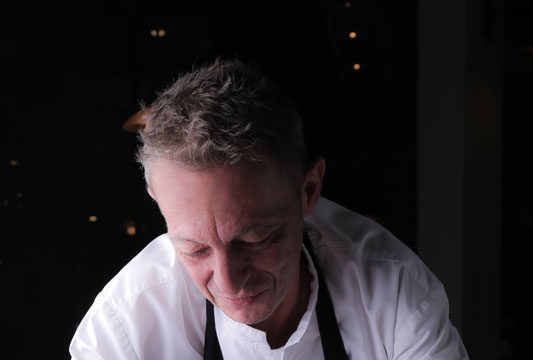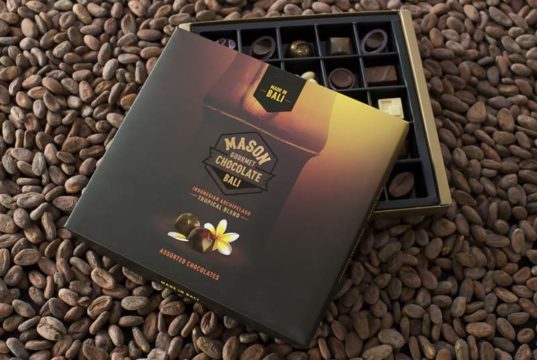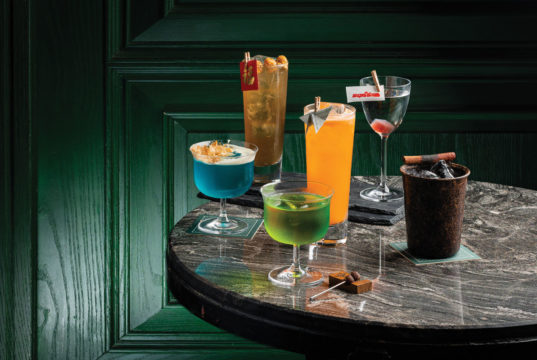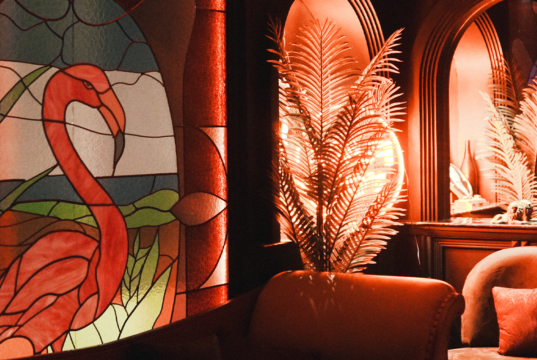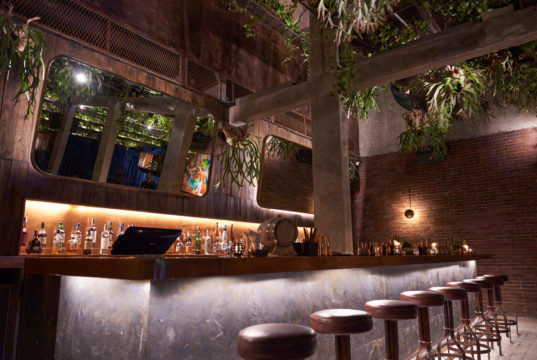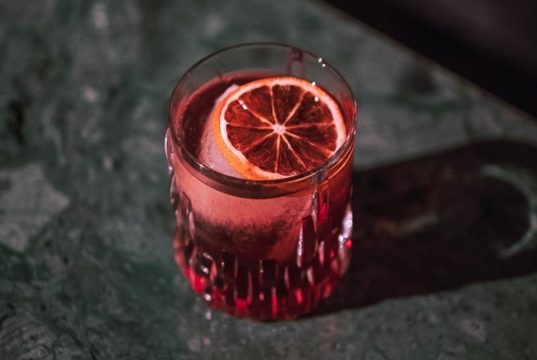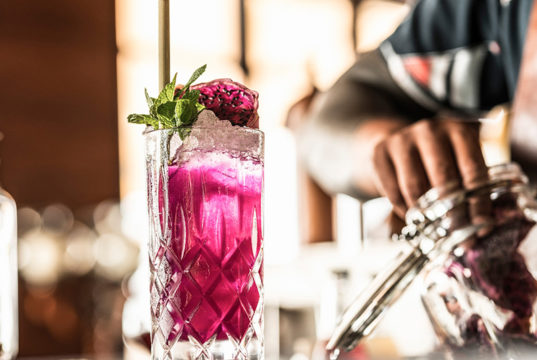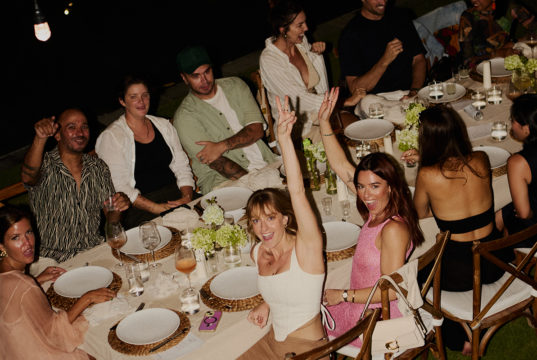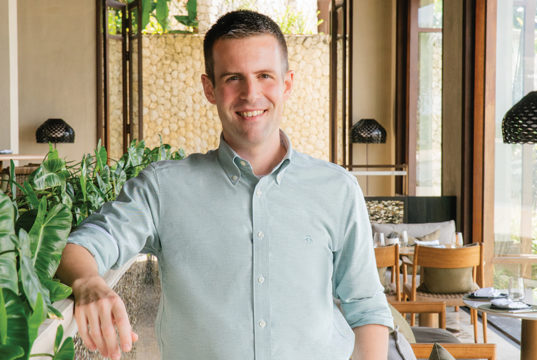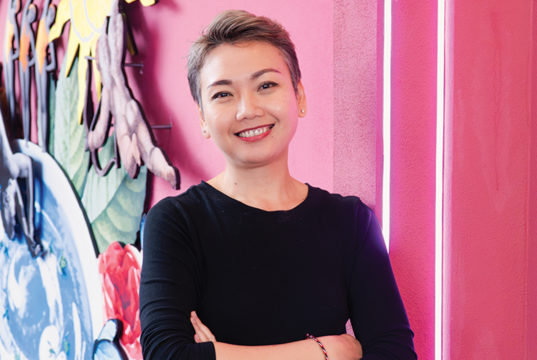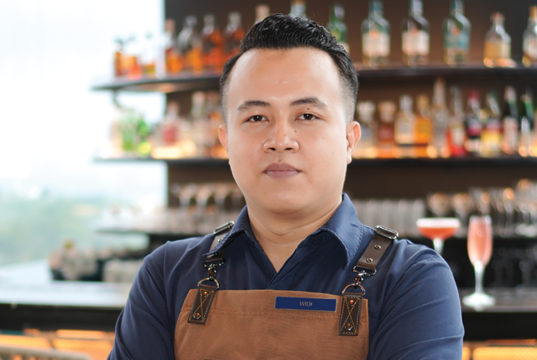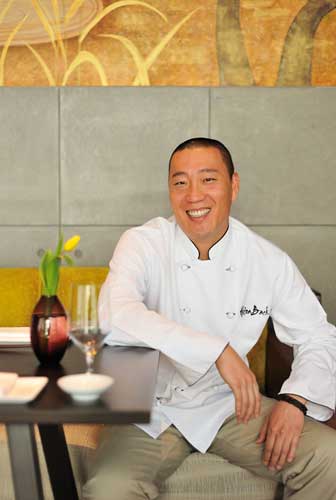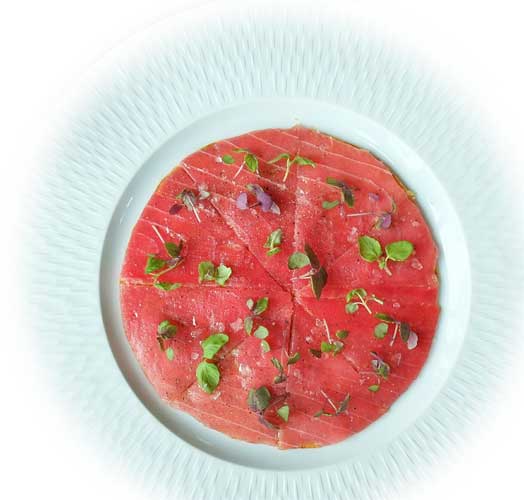Q: First of all, congratulations on the huge success of Akira Back in Jakarta. Furthermore, you are opening up more restaurants in Dubai and New Delhi. You must be pretty busy most days?
A: Definitely busy, but in a good way! I was just in India throughout the last week to accept a best restaurant award. It is indeed humbling and very satisfying to receive these recognitions and be appreciated in such a way. So yeah, things have been pretty hectic lately, but I’m enjoying every moment of it.
Q: As a Korean who learned Japanese cooking in the United States, you have a very interesting background. How does this translate into your cooking style and how you run your kitchen?
A: I guess I’ll just tell you my life’s story here. I actually grew up playing baseball in Korea. I wanted to be a baseball player in Korea. That was my dream. And then I was supposed to go to Japan and get into the game, but my family moved to America because my father actually lived in Aspen, Colorado, and he invited us to move. That was when I was barely 16 years old. I couldn’t speak a word of English because the move was so sudden.
Back then I met a few people who I thought were really cool. They had blue hair, pierced noses, earrings and leather jackets. I wanted to talk to them but I couldn’t speak English, and I was scared to come up to them so I just followed them around. I noticed they were skateboarding and snowboarding, so naturally I tried both, but snowboarding came more naturally to me. And then I started snowboarding with these guys and travelling with them. Thanks to the sports I did when I was younger, my body fitted right into it. I was actually the first Korean in the US who became a professional snowboarder. I did it for the sense of freedom and adrenaline rush.
Long story short, my sponsors in the X-Games became more and more commercial and they wanted me to compete even harder to earn them more profit. Eventually this commercial thing burned out my passion for the sport. The freedom was no longer there.
After that I met a very nice and inspiring, but crazy, chef. I said crazy because he would lose it if something went wrong. Eventually that’s the kind of chef I became. Anyway, I went on to learn cooking from him for years and I really enjoyed this new trade I picked up.
In terms of how I run my kitchen, I can totally relate it to my sports background. Cooking is teamwork and not an individual thing. You have to have really good control. You have to be a coach. I have to know which person is good at what aspect and how to allow that person to maximize his/her potential.
Q: How do you personally deal with the different cultures in places you’ve lived in and all the places you’ve travelled?
A: As I travel more every year, I feel like the universe is getting closer and closer. Before technology, I mean like seven years ago, if you travelled to a new continent you’d probably be culture shocked because of the differences. But now I’ve noticed it’s not like that anymore. And it’s a good thing I live in Vegas most of the time. Vegas is a melting pot of cultures, so I’m grateful cultural differences are not so much of a problem for me.
Q: Snowboarding is about overcoming fear and celebrating freedom of spirit. How has your background as a former professional snowboarder helped you in your culinary career today?
A: The physical aspect is almost the same. In the kitchen, we really work. When I was starting out, I worked longer than 15 hours a day. Your body needs to be fit. You’ll notice that established old school chefs have a heavier build compared to our generation. Our generation is fit, and the newer generation chefs are even fitter! Some of them can even pass for a bodybuilder. It’s a really physically demanding job so you really have to take care of your body.
I don’t think a lot of people know, but they say being a chef is the worst profession because chefs live shorter lives. As a chef, it’s a good thing if you are fit.
Another great thing about cooking is that, like snowboarding, it’s also about freedom. Nobody can judge you. I make the food and if you don’t like it, in my mind I’d go, “Man, too bad if you don’t dig what I’m trying to do.” And I just move on.
Q: Right now you have three different restaurants: Akira Back, Yellowtail and Kumi. What are the key differences between the three?
A: Akira Back is a combination of Yellowtail and Kumi. I designed Yellowtail for more of my feminine side, and Kumi for the masculine side. Kumi has more punch, and Yellowtail offers a lighter flavour in terms of the menu. Lately, I think Kumi has been hitting it well with DJs, and so it’s been attracting more of the music crowd, while Yellowtail is a little quieter and intimate. If you’re going on a date, you go to Yellowtail, if you’re looking to have a great time with friends, definitely Kumi. Now, Akira Back is right in the middle of the two. Date, party, hang out with friends—all this you can do in Akira Back.
Q: What’s your take on the current trend of fusion cuisine happening globally right now since you’re very much a key part of this culinary cultural merging?
A: Being Asian is definitely a plus, but I wouldn’t say I’m the only one doing this. A lot of other chefs are doing a fantastic job at it. We’re all trying to make our own food. I don’t necessarily use the term fusion, because I’m trying to make my own identity. When you eat my food, I want people think this is Akira Back’s food. Like snowboarding, every time I did a front-side 360, people instantly knew that’s me because I have my own style. Just like that, I want to carry out my own style in my own cooking.
I grew up eating my mom’s food, which is Korean, but I use the techniques of Japanese cooking. Given this, I can’t cook 100% Japanese, because my palate is Korean. But then can it be Korean and Japanese 50-50? Of course not, because we lived in America. All the ingredients taste and react differently with each other. In conclusion, what I’m making is whatever I feel is my own identity.
Q: Do you notice any difference in terms of the guests of Akira Back in Jakarta compared to other Akira Back venues?
A: Every time I’m here I notice the same type of guests, but more educated. When we started here, not too many people knew about us. Now it seems our popularity keeps going up and up. I think Indonesians travel a lot, so they definitely know what’s happening globally. The same goes for their expectations and what they ask of us. It’s definitely not a slow market here and we have to be constantly ready to satisfy these demands.
Q: Can you tell us about your core design philosophies here in Akira Back Jakarta?
A: When we designed it, our goal was to respect the Earth. Coming here, if you see that huge root out there, that’s Indonesian. The reason I picked that piece was to make a statement. That is a symbol of longevity, and roots never die. So we’re here to stay, but we put in the roots of an Indonesian tree.
As you come in the front, the spiralling black hole-like centrepiece with the name of the restaurant on it is to welcome guests, and then they are greeted by the front staff, followed by the chefs’ own welcoming phrase. So that’s the idea—a welcoming environment.
On the inside, we’re going for an inviting, modern-but-not-too-out-there feel. We use red bricks a lot because they exude a feeling of balance between warmth and cold, sort of like to remedy the humidity here. This private dining room has a honeycomb patterned ceiling, something which I thought would match the brilliant exterior design of this building.
Q: What inspires you to create and keep your endeavours going?
A: Gosh, I wish I could say I had a dream one night and it inspired me to do this and that, but no. I don’t think a lot. I just go with what’s real and happening. My instincts, you can say. So yeah, I don’t overthink anything. It just makes it hard to sleep well.
Q: If you could look into a crystal ball to see ten years from now, where would you see yourself?
A: Ten years from now I’ll have opened more than twelve restaurants. Guaranteed.
Q: What advice can you give to budding chefs/restaurateurs who are striving to make their way in the culinary industry?
A: Passion is the most important thing. Other than that, never give up. No matter what you do, everyone falls on hard times every once in a while. If you really love what you do, then you just follow your heart and don’t stop doing it.
Okay, that’s easy to say, but it won’t be so easy to practice. Up to my third year, I was not making money and people kept telling me how stupid I was. But it’s a good thing! I kept my mouth shut and just kept doing what I was doing.
If you’re young and completely new to the industry, I recommend finding an experienced chef that you respect and can teach you a lot, and spend some time working for that person. I don’t know how to say this in a positive way, but school may not always guarantee success. Especially if you’re a beginner, you need to learn the basics by doing it hands on. You will learn things faster in real time.
Q: Is it hard for you to find time for yourself and what do you do to unwind?
A: I still enjoy snowboarding, and I try to make time whenever I can, but as you said, usually it’s hard to find time. Aside from that I like to enjoy a good walk for like an hour or two and just clear my mind and enjoy my surroundings. The concept of doing nothing for a change is actually refreshing to me. I meet a lot of people every day, and sometimes it’s really my time to take a break. I’m actually going to Bali after this, and over there I’m not meeting anyone or doing anything other than eating, drinking and walking.
Chef Akira Back’s Tuna Pizza
4 8” flour tortillas
7½ ounces big-eye tuna, cleaned, trimmed, thinly sliced against grain
6½ ounces red onion, thinly sliced with grain, rinsed
1 ounce extra virgin olive oil
¾ ounce white truffle oil
½ ounce micro shiso mix
¼ ounce micro bulls blood
Maldon sea salt as needed
Black pepper, very coarsely ground, as needed.
Ponzu:
5 ounces soy sauce
5 ounces Shiragiku vinegar
½ ounce lemon juice, fresh
Combine all ingredients and mix thoroughly.
Ponzu Mayo:
9 ounces mayonnaise
2¼ ounces ponzu
For ponzu mayo:
Combine both ingredients together and mix thoroughly.
To prepare:
Brush tortillas on both sides with extra virgin olive oil and season with black pepper.
Toast tortillas until very crispy in either a broiler or on a griddle. Remove to another work surface. Brush generous amounts of ponzu mayo on one side of tortilla.
Garnish with red onions on top of ponzu mayo.
Lay tuna over onions and mayo, making sure to completely cover the tortilla.
Season tuna with black pepper and sea salt.
Drizzle truffle oil over top of seasoned tuna, evenly seasoning the whole pizza.
Sprinkle micro shiso and micro bulls blood over top of the pizza. Make sure greens are evenly distributed.
Cut pizza into 8 even slices.
Transfer gently onto plate.
Serve immediately.




